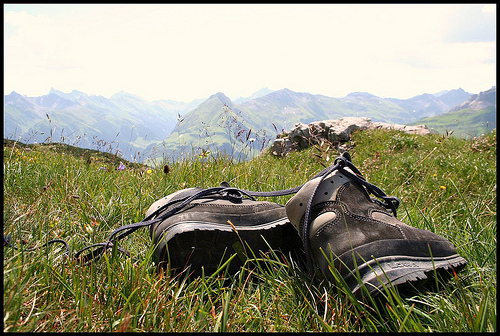You have to travel a distance to see something new. You might not be able to capture what you see, but that doesn't make it any less valuable.
Occupational therapist, accountant, industrial designer, filmmaker, journalist, pre-school teacher: we all want to capture the perfect moment. Once in a while we all notice things that stand out from quotidian experiences. We see something bright and shiny and we’re convinced, at least for the moment, that it’s one of the best things we’ve seen, or thought about, or experienced in a long time. Often when we revisit the idea hours or days later its glow has diminished, like fading heat from a cooling fire pit. Then, when we try to integrate the idea into some aspect of our life or work, it begins to look surprisingly ordinary. We turn it over in our mind’s eye and see it for what it is—a slightly smoother pebble in an ordinary pile of rocks. It may be different from the other rocks in its heap, but it’s hardly a diamond.
This is inevitable. Great ideas are hard to find. Ideas are not the challenge; greatness is the challenge.
A few years ago an artist friend recounted an experience he had with his then-girlfriend on a cross-country trip. On a day-long hike somewhere in the Dakotas, a thunderstorm way off on the horizon was starting to clear. From the other direction sunlight streamed over their shoulders as they tromped through the foothills, miles distant from the storm. The illuminated foreground turning the scrub prairie into a golden field of fire. As the afternoon grew late and the rays of the sun grew long, the sharp light dividing the distant storm from the dry trail saturated the day with Kubrickian color. On the horizon like a curve of neon lights against the charcoal gray sky, a vibrant double rainbow faded into view. My friend recalls the moment like a spiritual arrival.
"I thought to myself, ‘Grab your camera!’ I threw off my backpack and started digging around, looking for it."
Then: the epiphany. Looking through the bag, figuring out the camera settings, trying to compose the shot, he was missing the show. It was a revelation. No camera would do this justice. The iridescent rainbows glowing against the carbon colored sky, in real time, in real space, could only be experienced from where he stood. To get the full effect required the sweat on his back, the clean air, his youthful frame, his girlfriend, and the all day effort to hike the trail. The extraordinary double rainbow—the ostensible event—was simply an unexpected marquee attraction.
Sometimes you just cannot capture an idea that temporarily captures your soul. Sometimes there are moments of beauty or epiphany or surprise that simply need to exist in the moments you experience them. You have to make peace with the thought that there simply won’t be a “later”. There won’t be a “future”. There won’t be a “payoff”. There is the experience, right now, and you just so happen to be lucky enough to experience it.
For people who care about creative work, who make their lives about bringing new ideas to life, this is essential. When we learn how to experience life in real time, without necessarily capturing every single moment and paying it forward, we strengthen our ability to create essential moments later, in our own time. Most certainly there are things we hear and see and touch and experience that we need to integrate for later investment into our work. The value of what we do in the world has a lot to do with how much we’re paying attention to real events and sensations every day. But sometimes the best ideas are never recorded at all. Sometimes they simply fill us with life and help make us whole. Then, as whole people, we’re more capable of acting decisively and insightfully, and thus more capable of creating things that have meaning beyond our own private experiences.
@michaelstarobin
facebook.com/1auglobalmedia

